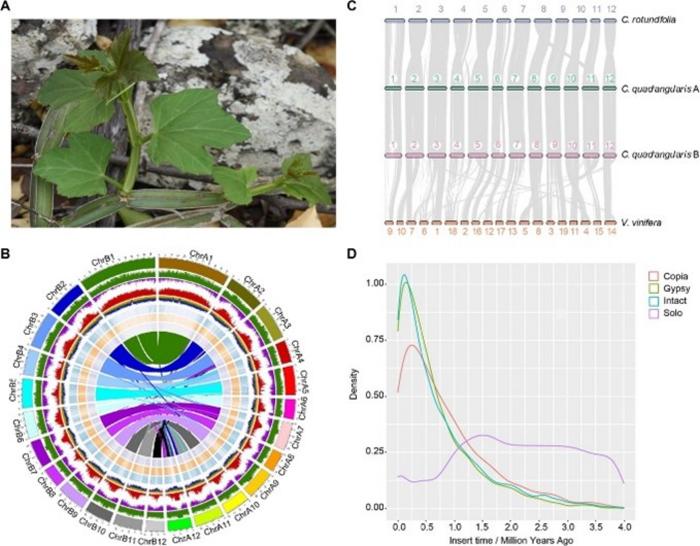Scientists have recently unraveled the genetic mysteries of Cissus quadrangularis, a plant that thrives in the most unforgiving desert environments. The findings, published in Horticulture Research on February 2, 2024, mark a significant step forward in the search for drought-resistant crops, offering hope for sustainable agriculture in the face of increasing water scarcity.
The collaborative international study delves into the genome of Cissus quadrangularis, revealing a complex tapestry of genetic adaptations that enable the plant to flourish in arid conditions. The 679.2 Mb genome, containing 51,857 protein-coding genes, is nearly half composed of repetitive sequences, highlighting the intricacies of polyploidy.
The Dominant Sub-A Genome: A Key Player in Drought Survival
Among the genetic adaptations uncovered, the dominant sub-A genome stands out as a crucial factor in Cissus quadrangularis’s drought survival strategy. This genome exhibits robust gene expression during periods of drought, suggesting its pivotal role in the plant’s resilience.
The study also sheds light on the activation of essential metabolic pathways in the stem, which play a vital role in water conservation. The distinct diurnal gene expression patterns observed in the stems, as opposed to the leaves, underscore a specialized evolutionary adaptation that provides valuable insights into Crassulacean acid metabolism (CAM) photosynthesis and its contribution to arid adaptability.
Revolutionizing Crop Breeding for a Water-Scarce Future
Dr. Qingyun Li, the lead scientist on the project, emphasizes the transformative potential of genomics in addressing the challenges posed by increasing aridity. “Our work with Cissus quadrangularis exemplifies the transformative potential of genomics. The genetic insights we’ve uncovered are a beacon for developing crops that can endure the increasing aridity, offering a ray of hope for sustainable agriculture,” Dr. Li remarks.
The insights gained from the Cissus quadrangularis genome are poised to revolutionize crop breeding, paving the way for varieties that can withstand water scarcity. By incorporating the CAM pathway and the plant’s drought-tolerance genes, the agricultural sector can make strides towards more resilient harvests, ensuring food security in arid climates.
As water scarcity emerges as a major threat to global ecosystems and food production, understanding how plants like Cissus quadrangularis conquer arid landscapes becomes increasingly critical. The genetic blueprint of such species holds the key to enhancing agricultural resilience in the face of climate change, offering a glimmer of hope for a more sustainable future.


